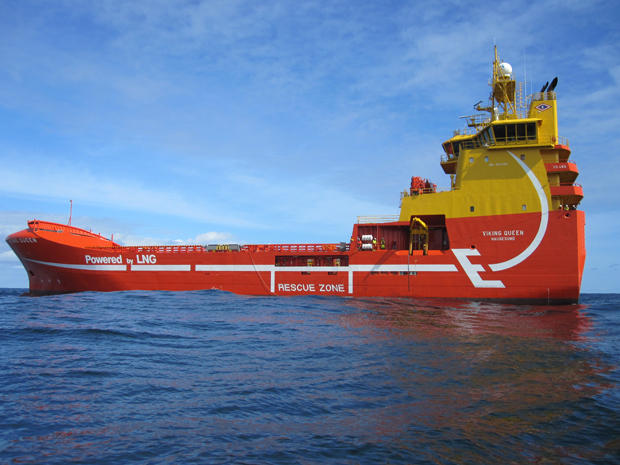Saturday, 03/01/2026 | 04:23 GMT+7
Eidesvik is retrofitting its offshore support vessel (OSV) Viking Queen with a 650 kWh, 1600 kW energy storage system. The Viking Queen is the first OSV to get such a system installed as a retrofit solution. The agreement is made possible through targeted cooperation between Lundin Norway AS which has the vessel on hire; ZEM AS, the supplier of the system; and Eidesvik.
Battery cell and module monitoring is sure to pose a challenge to adopters, and to therefore feature on the Maritime Battery Forum’s agenda. Thermal management is an important consideration, for example. Battery life degradation is believed to be very dependent on temperature; the more uneven the temperature, the more uneven the battery ageing process. An optimum absolute temperature will be required in the area where the batteries are stored, and so liquid cooling systems may become necessary on many hybrid and all-electric craft. Similarly, in terms of determining onboard space, designers and operators may have to account for the installation of large fans and filters, to control temperature and to limit accumulation of dust.

Temperature tests have been conducted by Norway-based ZEM, one of the companies to have worked with DNV-GL, and an enthusiastic supporter of the Maritime Battery Forum. Egil Mollestad, chief technology officer at ZEM, describes some of the results of subjecting the battery to varying temperatures. “After 90 days of running the battery in a 55degsC environment, we noted that all battery power was gone there was no energy left in the unit at all,” Mollestad recalls. “In a temperature of 42degsC, the battery suffered 30% permanent energy loss. However, between 18-25degsC, there were notable, but very small, losses. The higher the state of charge for a given temperature, the higher the calendar degradation will be, even if the battery is not being constantly used.”
Use of the energy storage system will result in a fuel saving of approx. 18% for the vessel from the hybrid system. Further, NOx and greenhouse gas (CO2e) emission levels will be reduced by approximately 25%.
In addition to the agreement for energy storage system, Lundin Norway AS and Eidesvik have agreed an extension of the vessel’s contract.
Anh Tuan








 Webinar 2: “Financial Support for Energy Efficiency Enterprises – Opportunities and Challenges”
Webinar 2: “Financial Support for Energy Efficiency Enterprises – Opportunities and Challenges”
 Vietnamese enterprises achieve green growth and cut costs through energy efficiency
Vietnamese enterprises achieve green growth and cut costs through energy efficiency
 Capacity Building for Program Implementing Entity
Capacity Building for Program Implementing Entity
 Enhance Energy Efficiency Knowledge for Managers of Cement Industrial Enterprises
Enhance Energy Efficiency Knowledge for Managers of Cement Industrial Enterprises
 Capacity building for participating financial institutions in Ho Chi Minh City
Capacity building for participating financial institutions in Ho Chi Minh City
 Strengthening capacity for energy management officers of local government agencies
Strengthening capacity for energy management officers of local government agencies
 Steel Enterprises Saving Energy and Enhancing Competitiveness
Steel Enterprises Saving Energy and Enhancing Competitiveness